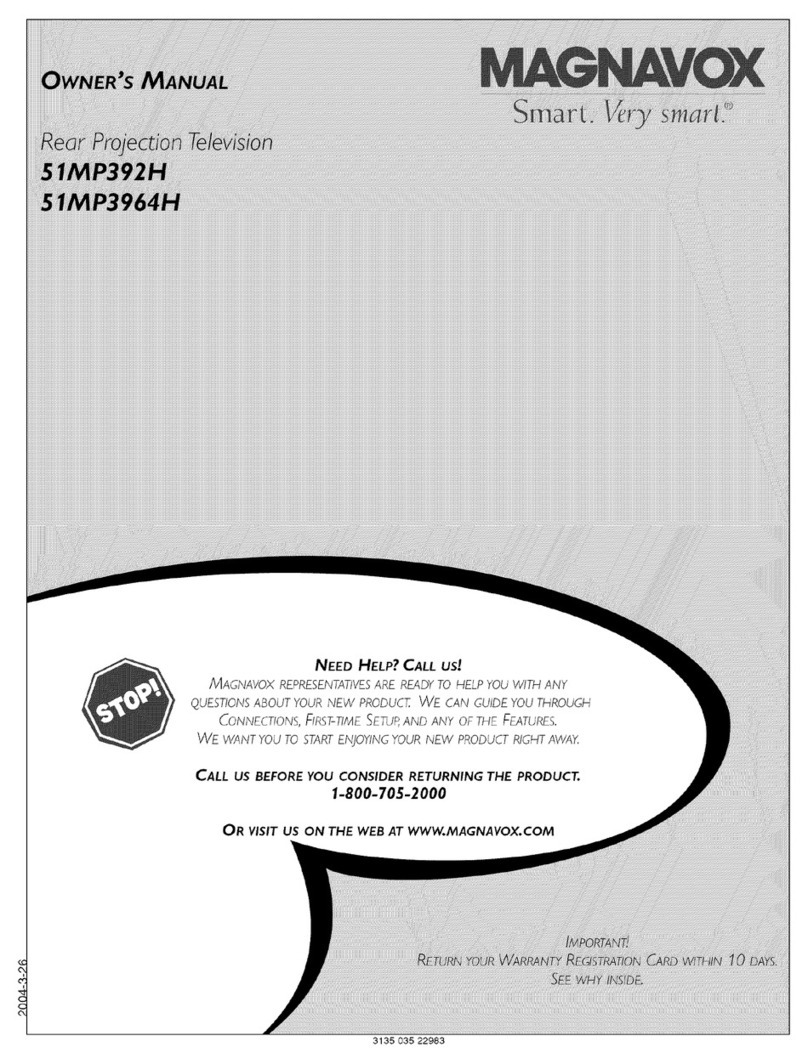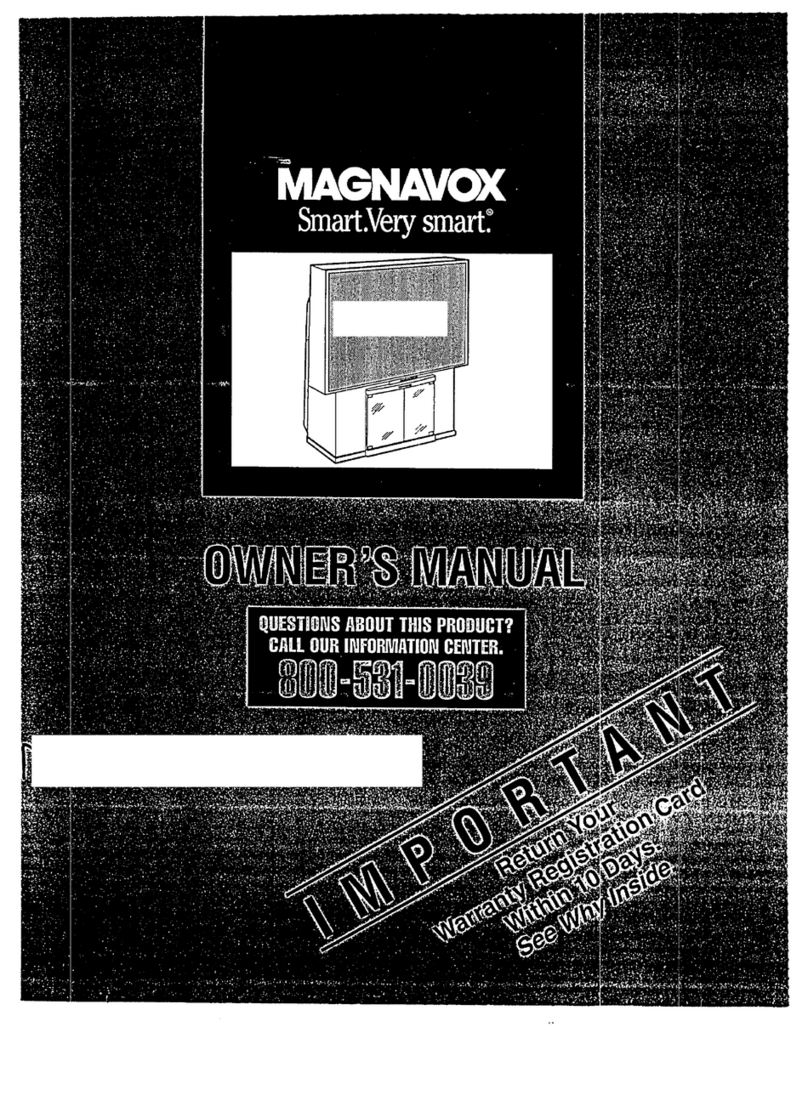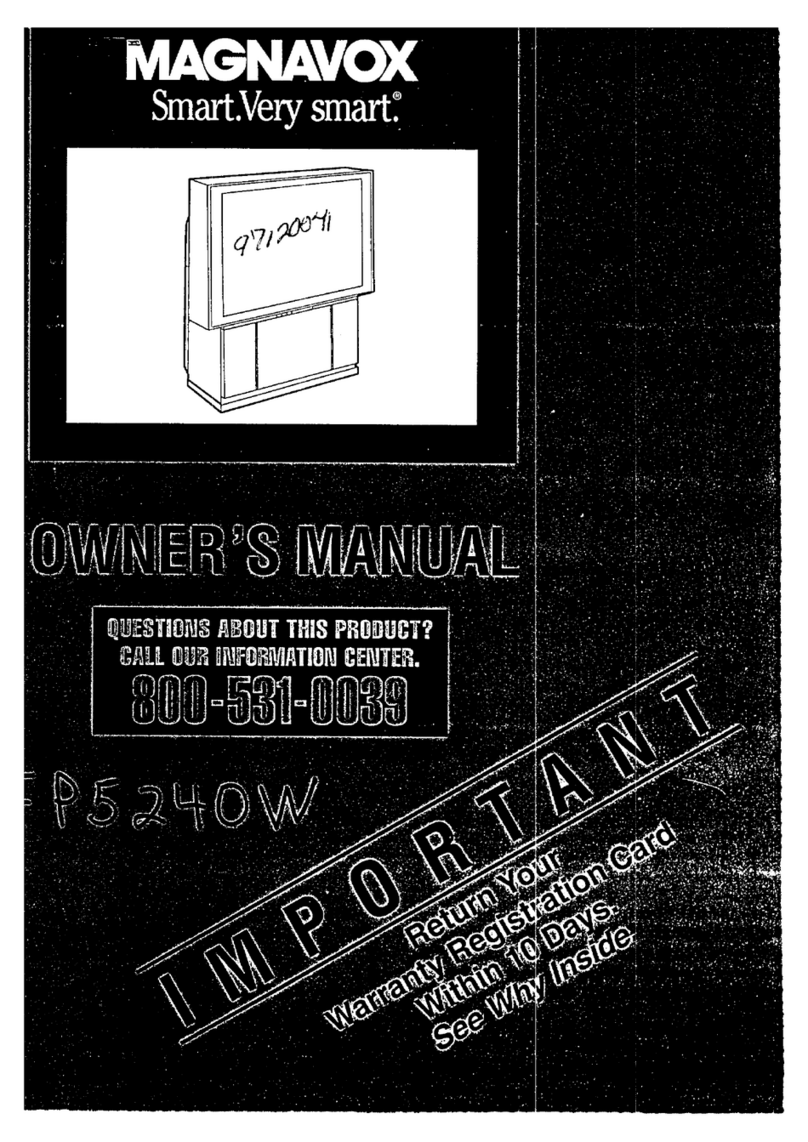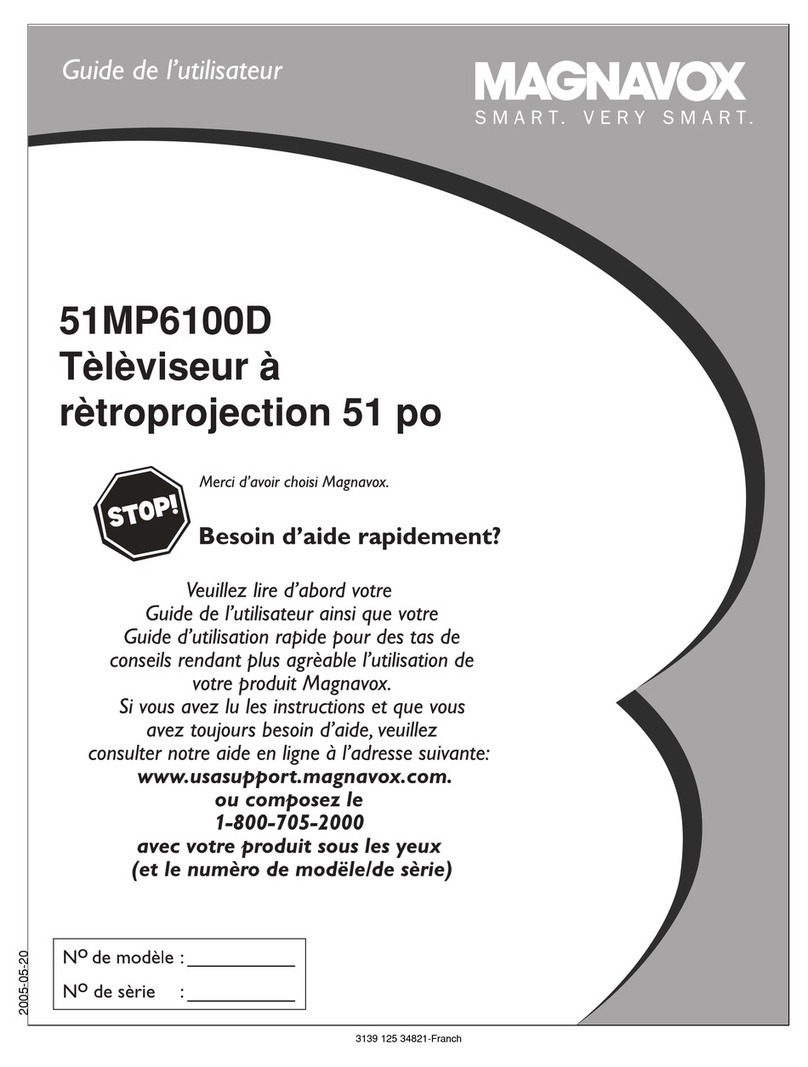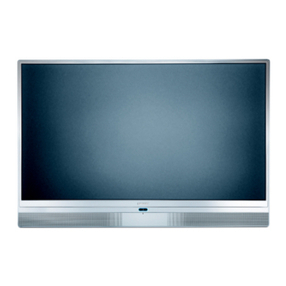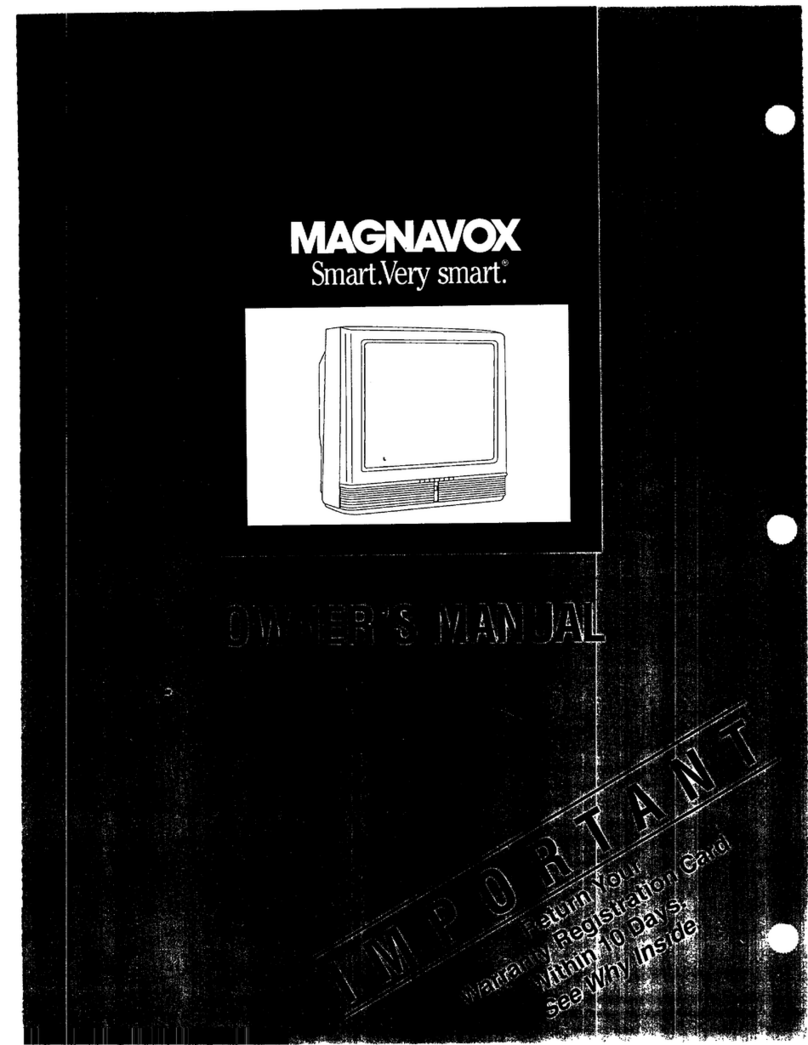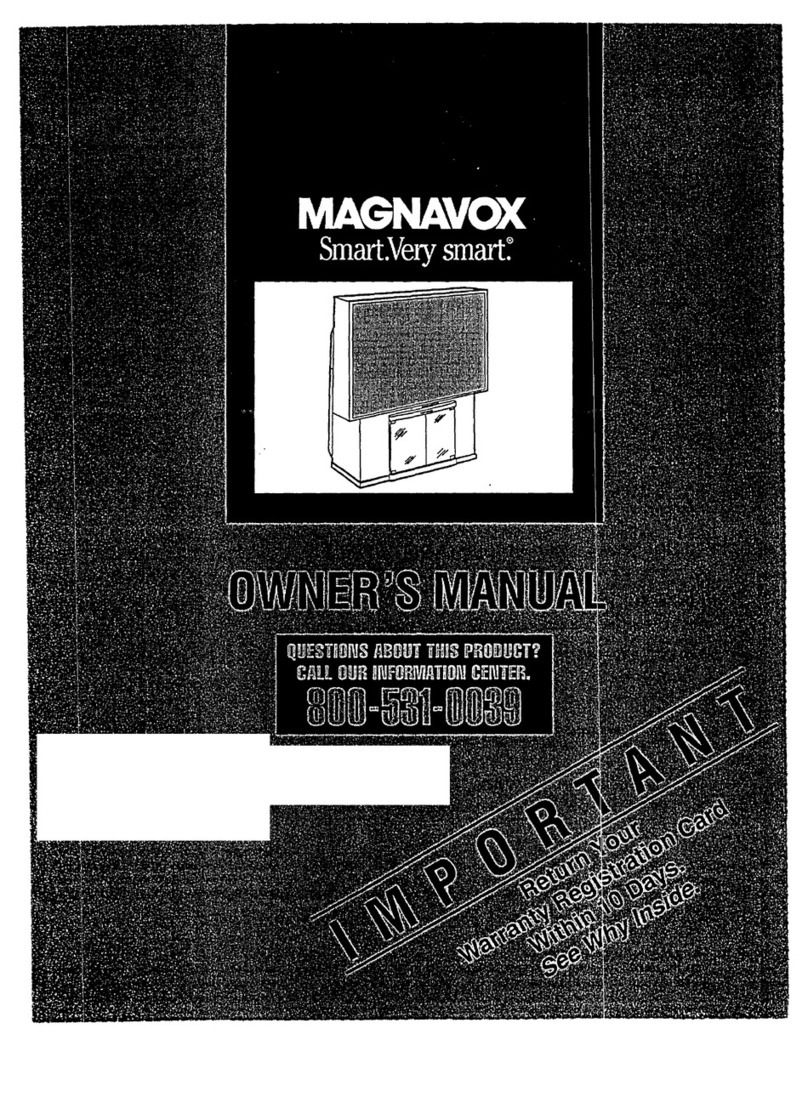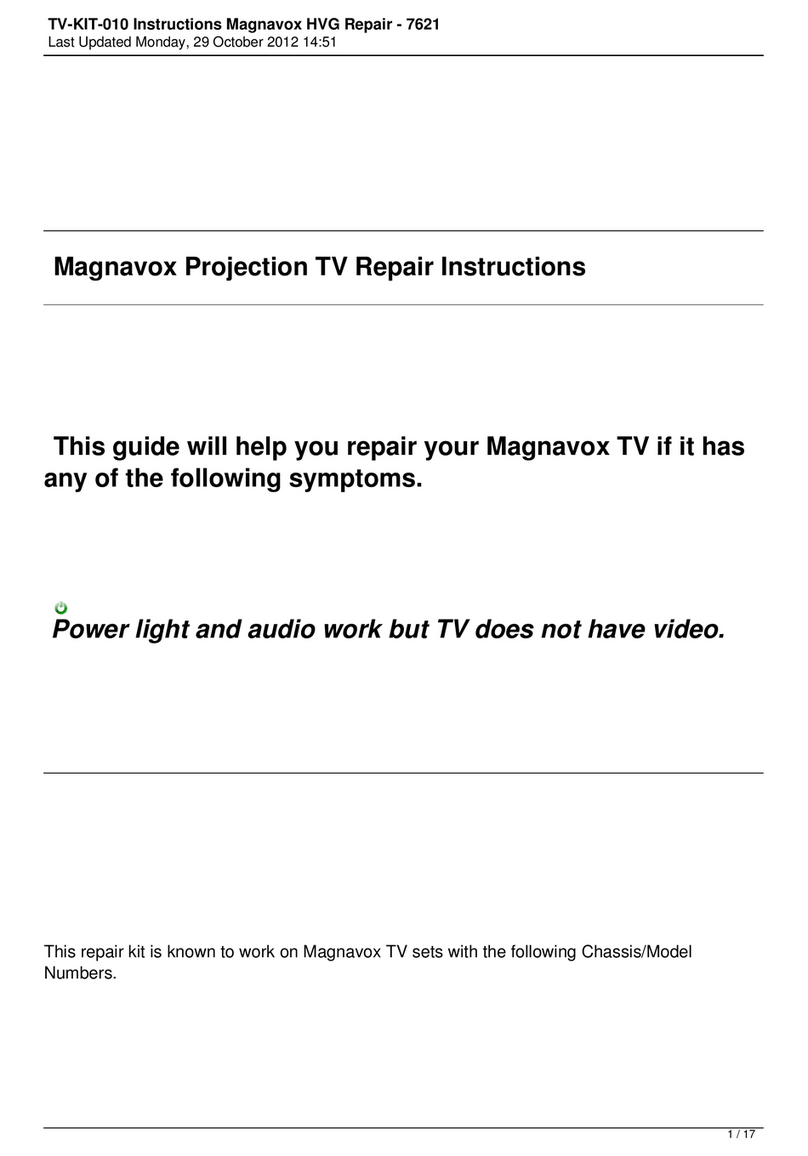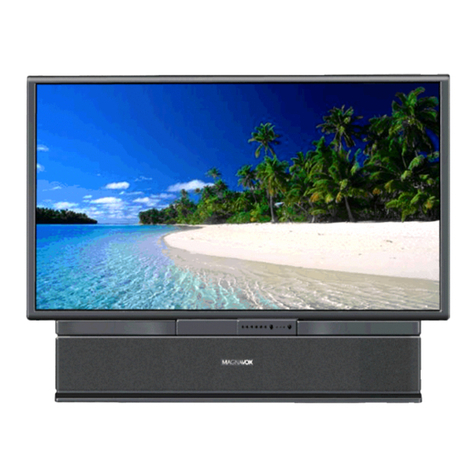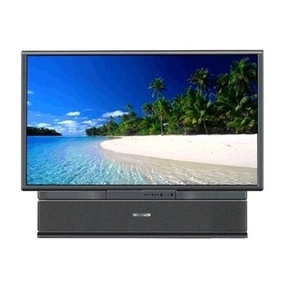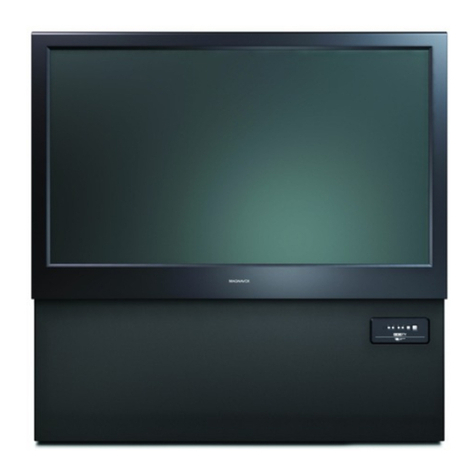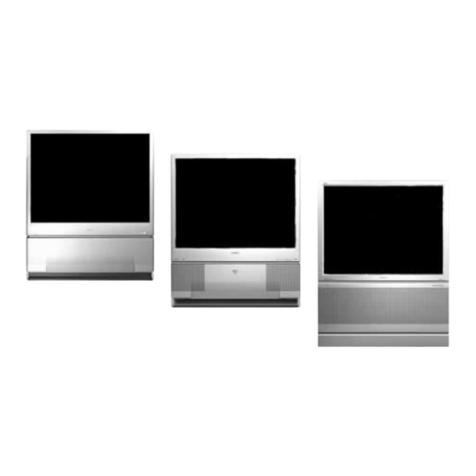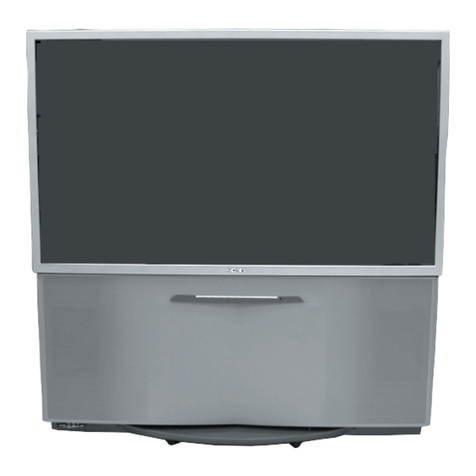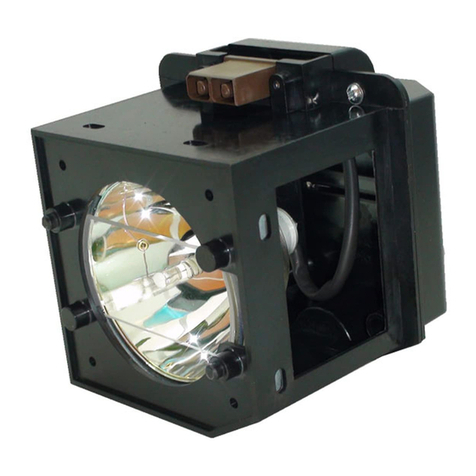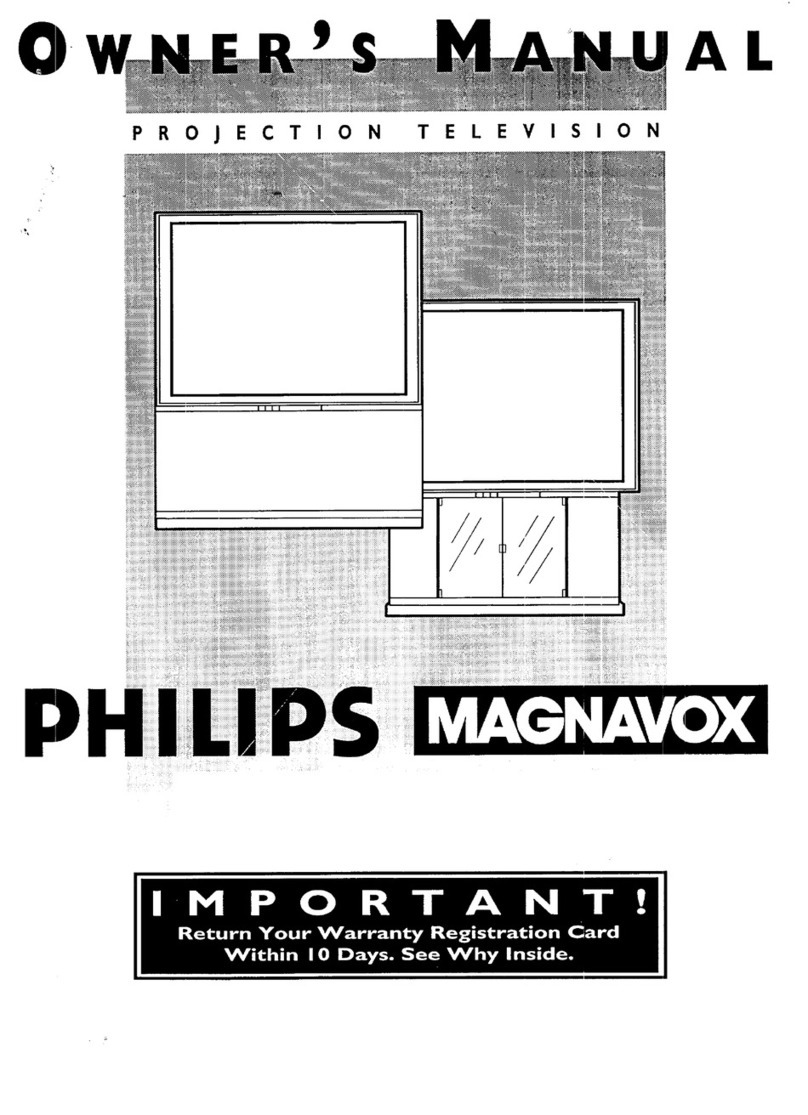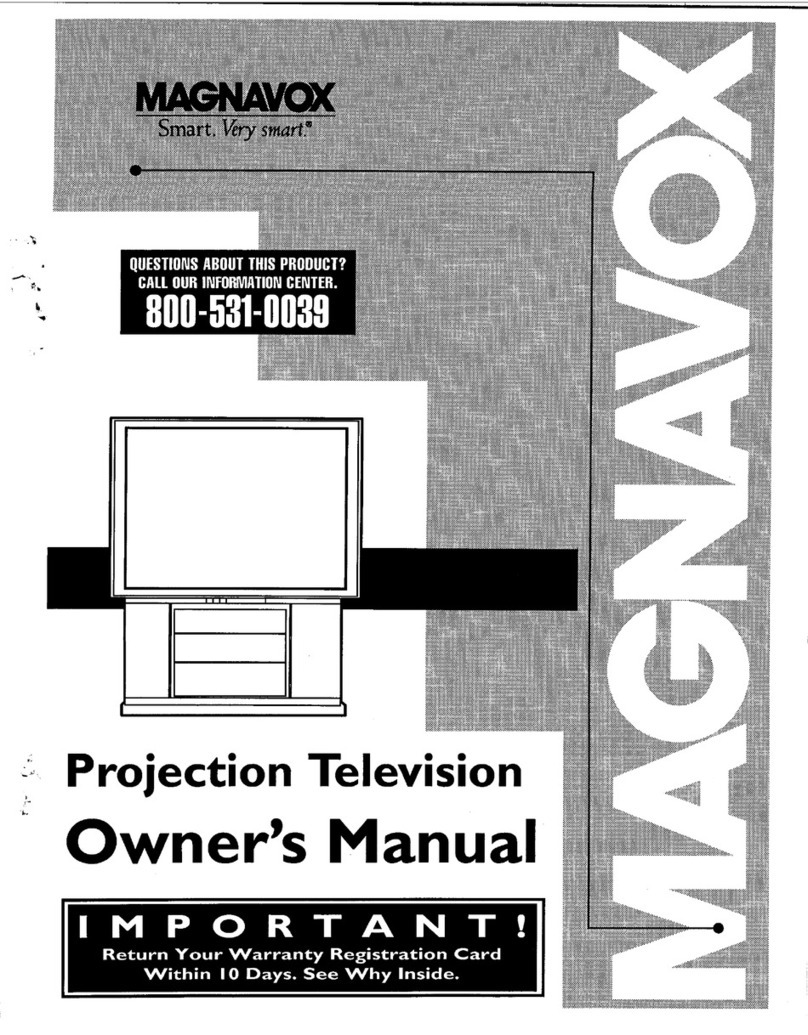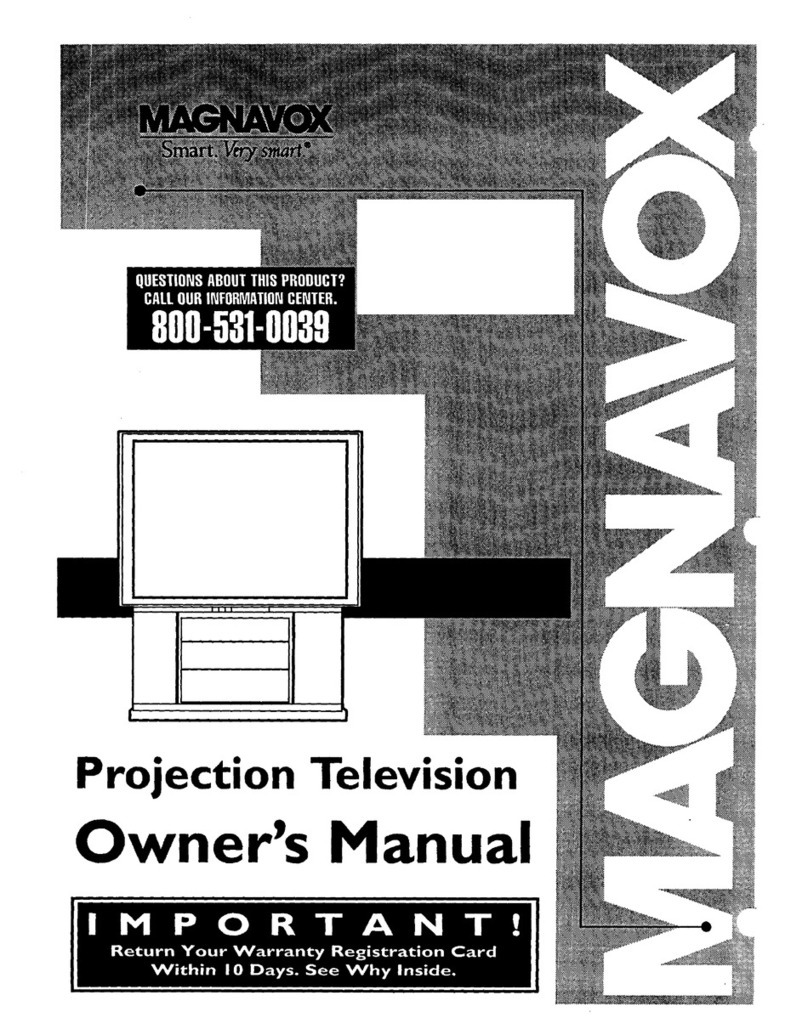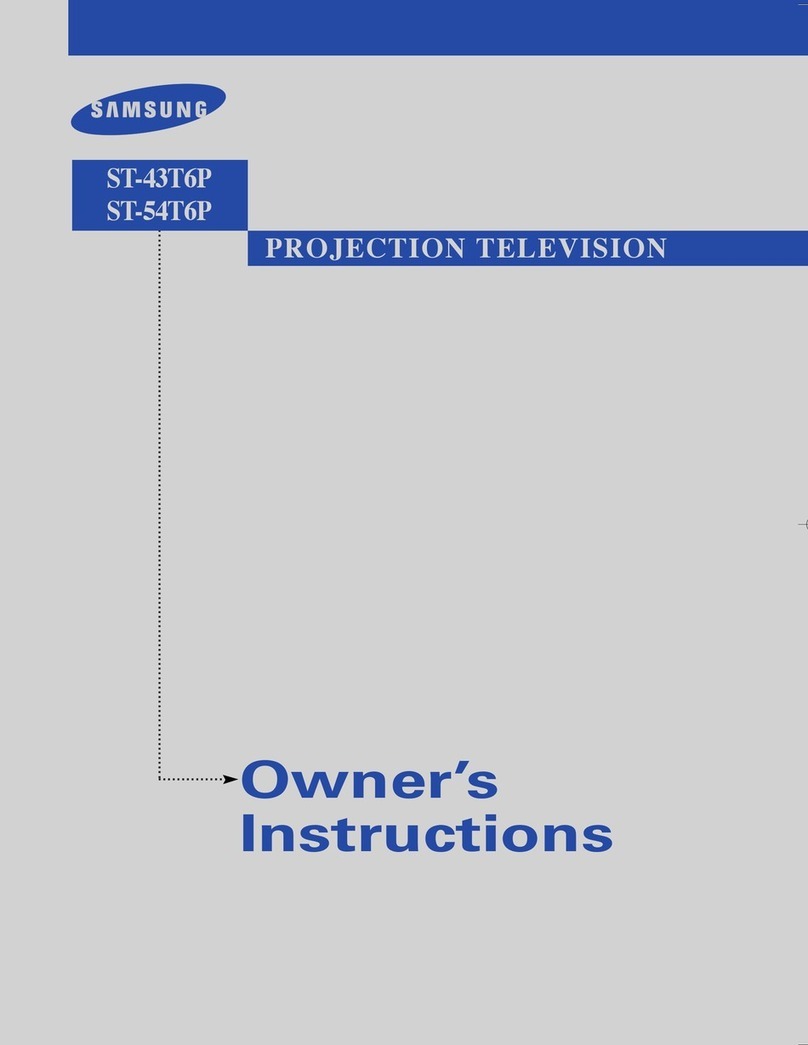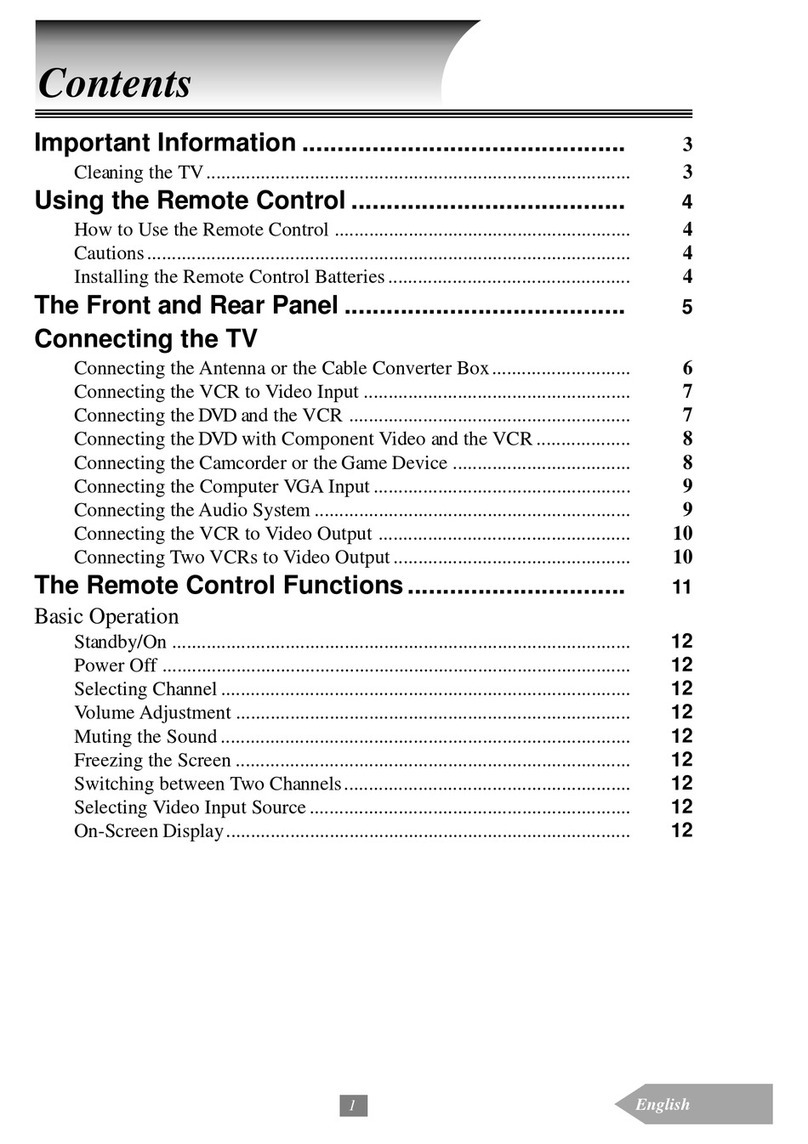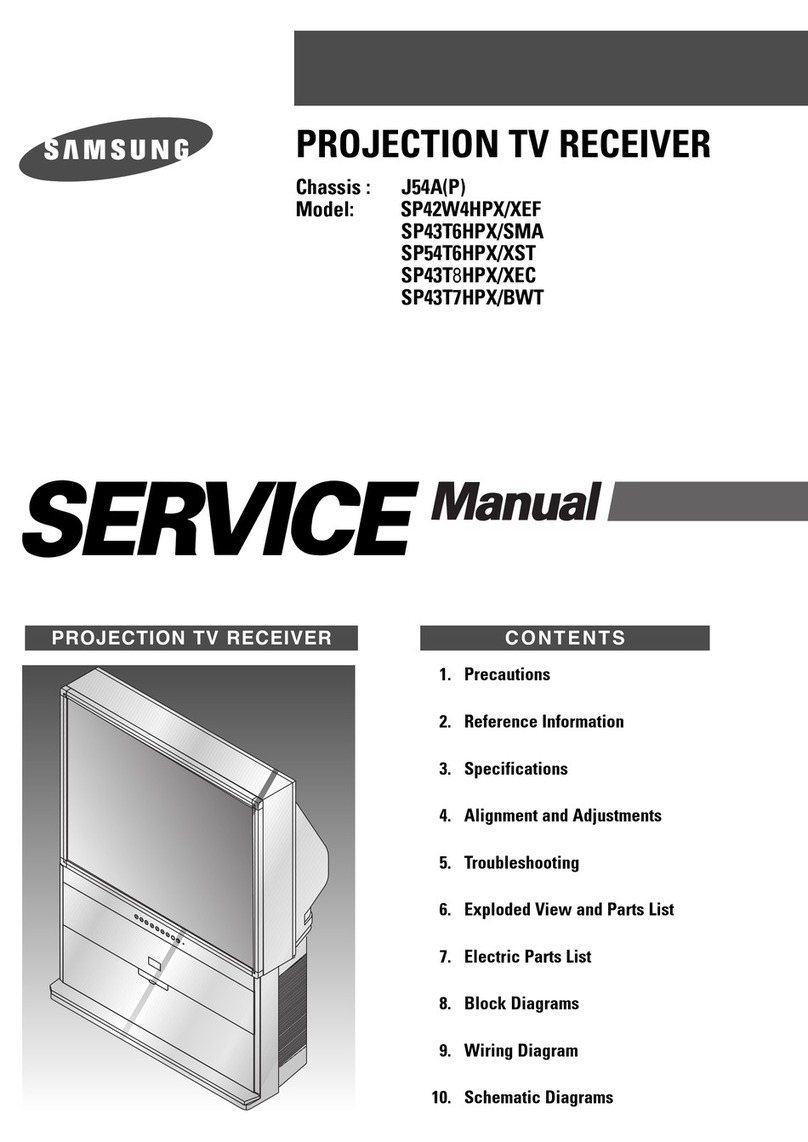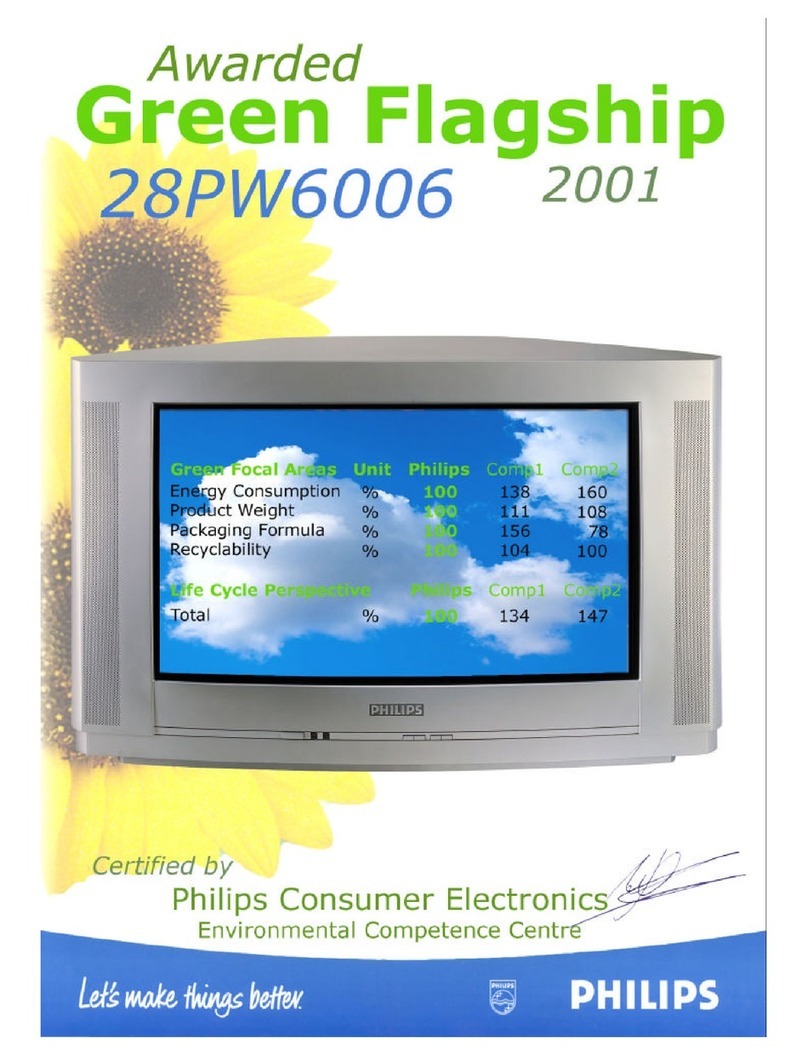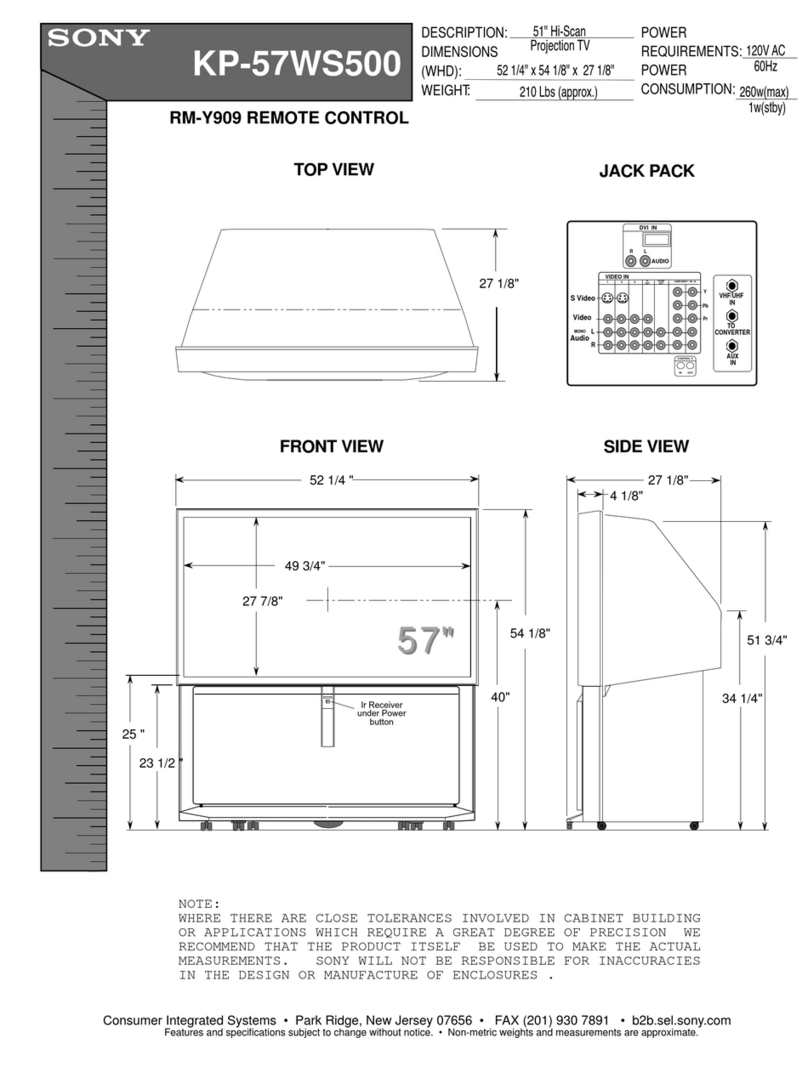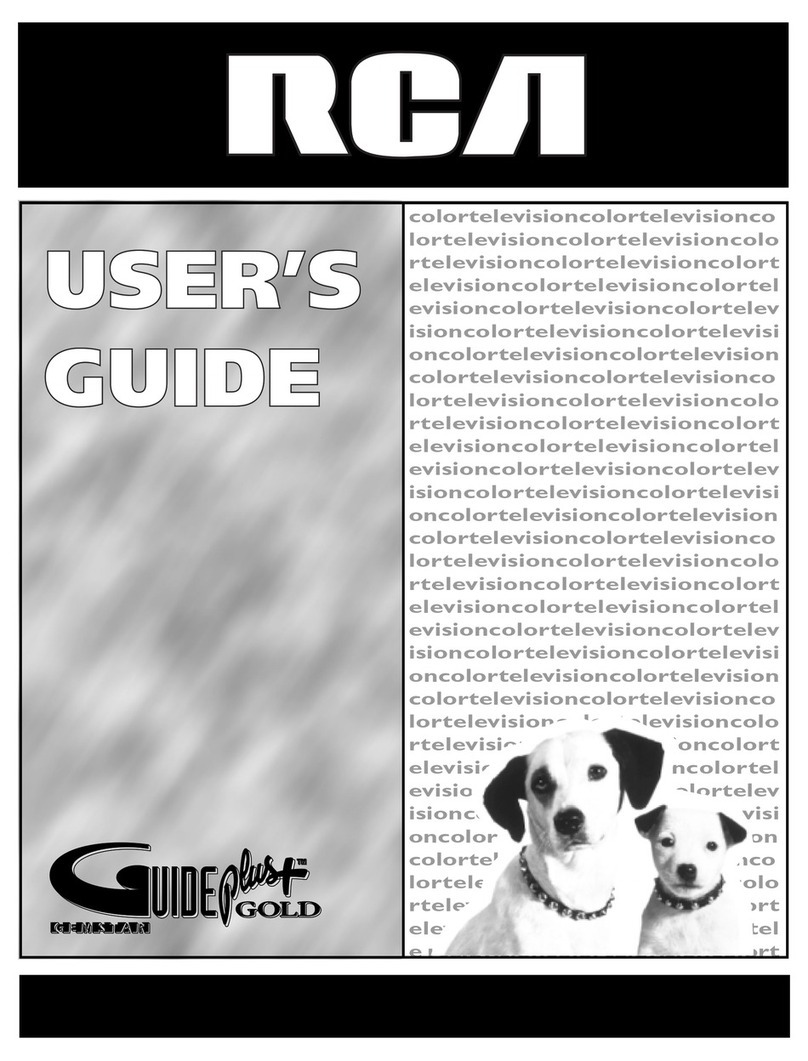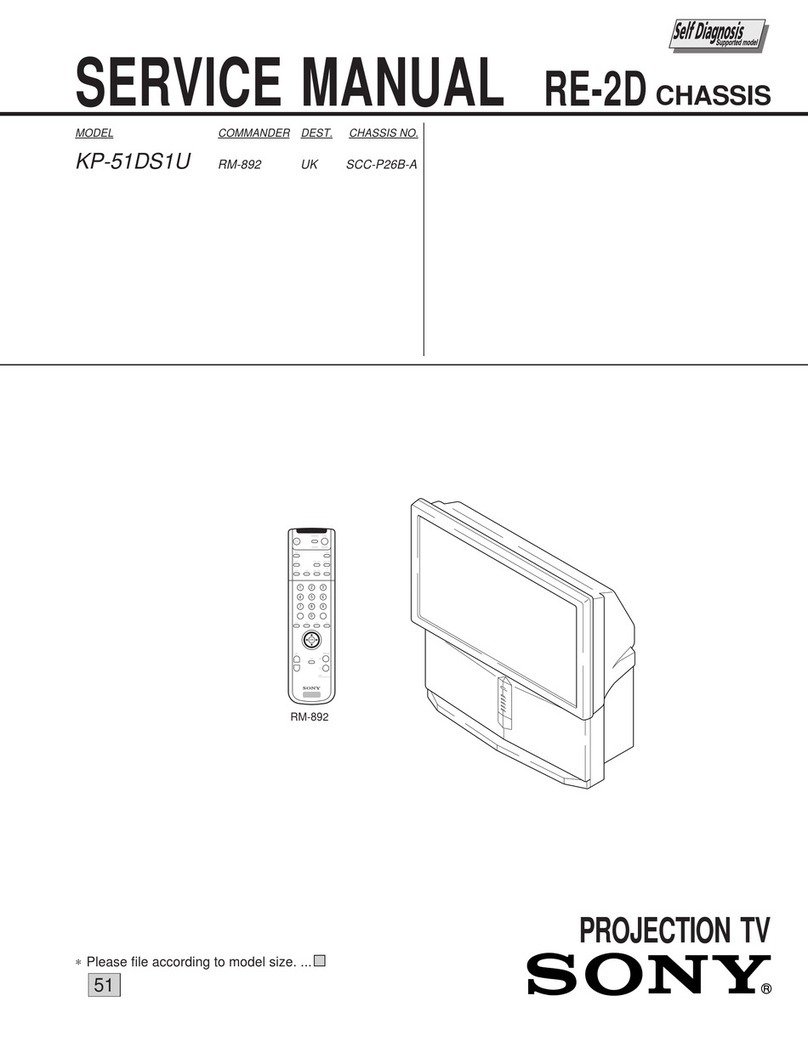SAFETYINSTRUCTIONS- Readbeforeoperatingequipment
This productwasdesignedandmanufacturedto meetstrict qualityand
safetystandards.Thereare, however,someinstallationandoperation
precautionswhichyoushouldbeparticularlyawareof.
1. Read Instructions- All the safetyandoperating instructions should
be readbefore the appliance is operated.
2. Retain Instructions - The safety and operating instructions should
be retainedfor future reference.
3. HeedWarnings-:All warnings on the appliance_nd in the operating
instructions should be adheredto.
4. Follow Instructions - All operating and use instructions should be
followed.
5. Water and Moisture - Tl;e appliance should not be used near water
-.for example, near a bathtub, washbowl, kitchen sink, laundry tub,
in a wet basement or neara swimming pool, etc.
6. Cartsand Stands - The applianceshould be used only with acart or
stand that is re('ommended by the manufacturer.
6A. _ An appliance and cart combination should be moved
with care. Quick stops, excessive force, and uneven
surfaces may cause the appliance and cart combination
to overturn.
7. Wall or Ceiling Mounting - The appliance should be mounted to a
wall or ceiling only as recommendedby the manufacturer.
8. Ventilation - Tile appliance should besituated so that its location or
position does not interfere with its proper ventilation. For example,
the appliance should not be situated on a bed, sofa, rug, or similar
surface that may block the ventilation openings; or, placed in a
built-in installation, such as a bookcaseor cabinet that may impede
the flow of airt_rough the ventilation openings.
9. Heat - The appliance should be situated away from hear sources
,.suchas radiators, heat registers, stoves, or other appliances
',includingamplifiers) that produce heat.
10. Power Sources-The appliance should be connected to a power
'.supplyonly of l:hetype described in the operating instructions or as
markedon the appliance.
11. Power-Cord Protection - Power supply cords should be routed so
•thatthey are not likely to be walked on or pinched by items placed
Jpon or against them, paying particular attention to cords and
Dlugs,convenience receptacles,and the point where they exit from
the appliance.
12. Cleaning- The appliance should L.ecleaned only as recommended
bythe manufacturer.
13. Power Lines - An outdoor antenna should be located away from
power lines.
14. OutdoorAntennaGrounding- I1:arl outside antenna is connectedto
the receiver, be sure the antenna system is grounded so as to
provide some protection against voltage surges and built up static
charges.
Section 810 of the NationalElectri,"Code, ANSI/NFPANo. 70-1984,
provides information with respect to proper grounding of the mats
and supporting structure grourding of the lead-in wire to an
antenna discharge unit, size of grounding connectors, location of
antenna-discharge unit, connection to grounding ele('trodes and
requirementsfor the grounding electrode. SeeFig. below.
15. Non-use Periods - The power cord of the appliance should be
unplugged from the outlet when left unused for a long period of
time.
18. Object and Liquid Entry - Care sl'ould be taken so that objects do
not fall and liquids are not spilled into the enolosu,re through
openings.
17. Damage Requiring Service - ]he appliance should be serviced by
qualified service personnel when:
A. Thepower supply cord or 1heplug has beendamasked;or
B. Objects have fallen, or li(_uid has been spilled into the
appliance;or
C. Theappliance has beenexpo._;ed-torain;or
D. The appliance does not appe_rto operate normally or exhibits
a markedchange in performance; or
E. Theappliance has beendropF,ed,or the enclosure damaged.
18. Servicing - The user should not attempt to service the appliance
beyond that described in the operating instructions. All other
servicing should be referredto qu_.lifiedservice personnel.
Noteto the CATVsystem installer: This reminder is provided to call the
CATV system installer's attention to Article 820-40 of the NEe that
provides guidelinesfor proper groundir,g and, in particular, specifies that
the cable ground shall be connected to the grounding system of the
building, ascloseto the point of cable entryas practical.
EXAMPLE OF ANTENNA GROUNDING AS PER NATIONAL ELECTRICAL CODE (NEC)
Example of Antenna Grounding
as per NEC- National Electric Code
ANTENNALEADINWIRE
ANTENNADISCHARGEUNIT(NECSECTION810-20)
GROUNDINGCONDUCTORSI_ECSECTION810-21)
GROUNDCLAMPS
I
m
POWERSERVICEGROUNDINGELECTRODFSYSTEM(NECART250,PARIH)
ELECTRICSERVICEEQUIPMENT
MAC3964
3

